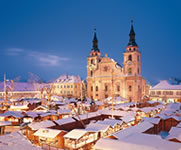
The cyclist-friendly, 500 kilometre Historic Oxen Trail from Wedel outside Hamburg to Viborg in Denmark – or vice versa - is a great way to see the beauty of north Germany in the region between the North Sea and the Baltic. For over a thousand years ox-drovers, travellers, pilgrims, merchants, apprentices, soldiers and kings struggled along the Historic Oxen Trail from Jutland in northern Denmark down to the river Elbe. The Historic Oxen Trail gets its name from the herds of oxen driven along it to market. Cycling along this historical route you are surrounded by nature and history as you discover the world of the Vikings, the Middle Ages and the early modern age.

From the 14th century until the railways were built in the 19th century, many western European towns and cities could only meet their requirements for meat by buying in additional livestock in Denmark and the duchies of Schleswig and Holstein. The result was a huge trade in cattle, and the creation of "oxen trails“. Ox droving mainly took place in spring and in many years, there were records of up to 50,000 animals having been driven along existing long-distance pathways, principally the route over the inland heaths and sandy plains in the centre of the region. This trail was not a road as we would recognise it today taking one route from A to B, but consisted of a number of routes from Viborg to the Elbe. Almost without exception the trails were unsurfaced, so in summer they were dusty and sandy, and in the cooler months they were muddy, quagmire-like and often impassable.








